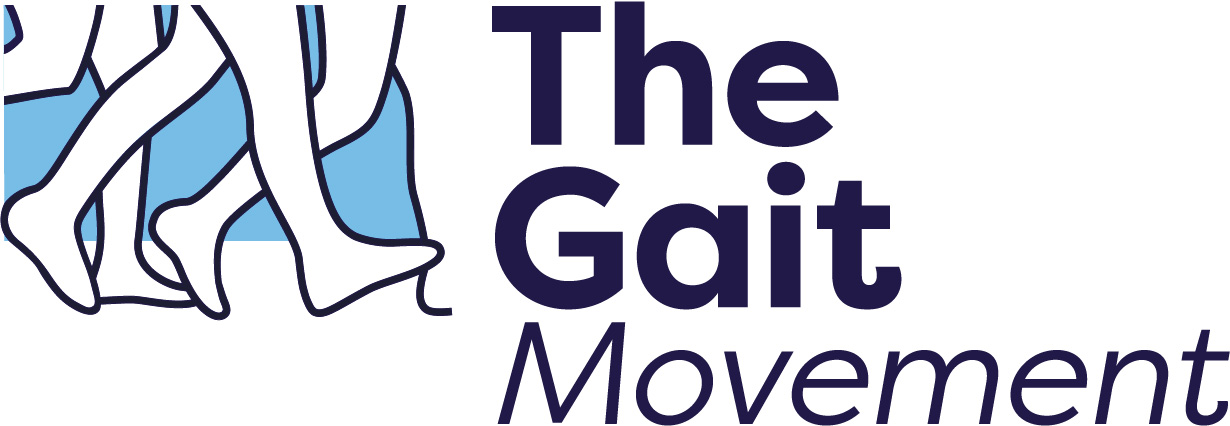
Estelle Humphris
Co-Author

Max Martin
Co-Author
Let’s discuss some simple load management tips to help your running clients on a better path to success and impress them with your knowledge and understanding of their sport. Even if your client is not presenting with a running injury, but they have mentioned that they have started running recently, these are some great subjective history questions to give you a decent overview of their load changes and screen for potential problems early.
1. What surfaces are they running on?
Are they running roads or trails?
Roads and footpaths tend to have an angle to allow water to run off, but running constantly on an angled surface means one foot and leg is going to fall into more valgus postures (think single sided medial knee or ankle pain) while the other leg/foot is going to experience more varus forces.
Also ask, are they always running the same direction? The same direction means they’ll be running on the same camber which typically tends to be a problem with road running.
Trail surfaces, on the other hand, are constantly changing. Every step is different. So this is going to minimise repetition unlike a road run. It also challenges and improves proprioception. On a trail, you always have to account and adapt to a variety of different surfaces, rocks, different angles, soft ground, hard ground etc. It’s a great exercise for the brain as it has to constantly make decisions throughout your run. So it’s excellent physical and mental fitness!
2. What shoes and orthoses are they wearing?
What type and brand of shoes are they wearing?
Do they have features that are functional and facilitate running in a sagittal plane motion?
Runners need to be running in a running shoe. Full stop. Not a casual shoe or a heavy walking shoe. A specific running shoe is the only option.
Running shoes should have an appropriate level of grip on the sole specific to their surfaces (this might mean 2 pairs of shoes! One for road running and a trail shoe for trails!), a forefoot rocker to aid propulsion, decent midfoot support, cushioning that is appropriate for the runners comfort and distances (again, sometimes 2 shoes is necessary, e.g. they might have a more cushioned shoe for their longer runs), firm heel counter for ankle support.
Are their orthoses still offering adequate support, function and fit well?
If you are not a Podiatrist, refer to one for an opinion!!
If they are wearing orthoses for trail running, are they having issues with rolling their ankles? If so, the orthoses might have too much control for this activity and blocking pronation so that the foot cannot adapt to uneven surfaces.
In this case, a Podiatrist may need to prescribe another device with a more flexible material and less control. Or you may try weaning them off orthoses for trail running, by strengthening their feet with exercises. If you’re not confident at prescribing exercises, speak to a mentor who is and can guide you, or refer to an Exercise Physiologist or Exercise Scientist.
3. Elevation – Are they running on hills or flats?
What sort of elevation are they doing in their week? And have they changed this recently?
If they’ve just started running up hills, this is going to increase load and require more strength.
Running up hills is great functional strength fitness for runners and improves their power output, however it is not “true” strength training…see question 4 below!
4. Are they doing Strength Training in the gym?
I always ask my running cohort, injured or not injured, are they doing any strength work in the gym?
Most endurance athletes just do their sport. So often runners just run and might think running up hills is their strength work as mentioned in question 3.
However, true strength work is typically classified by something that is heavy enough that you can only do a maximum of 15 repetitions. This is because it needs to be heavy enough to create strength related changes in the muscles. So if you are running up a hill for a hundred metres, you are still doing at least 75 steps – that’s 75 reps! See how that’s not true strength training?
An increase in strength training has been shown to improve running efficiency. And if applied correctly, it can help to minimise injuries.
So, l highly recommend you get your runners onto a strength program. The strength guidelines recommend two to three 30 minute strength sessions per week. If they’re not confident to do this by themselves, refer them to an Exercise Physiologist, an Exercise Scientist or a Personal Trainer.
5. What is their Distance Volume in a week and how do they spread this out?
Firstly, have they suddenly increased the distance of their runs significantly? (refer to question 7. Load History, below for a more detailed explanation of what is a significant load increase) If so, this is a red flag and they may need to dial back before building up slower.
Secondly, how many runs are they doing per week and what distances for each run?
The body loves variety and is so much more adaptable if there is a variety in types of training. Here, we are looking for a variety in distances for each run throughout the week, because this will then result in a variety in different speeds.
For example, a common distance volume pattern for a runner would be 2x 5km runs in a week and 1x 10km run; but they’re probably better off doing a 4km, a 7km and a 9km run, because for each of these distances, their body will have to pace themselves at different speeds.
Distance volume needs to be built up gradually, like anything else. So consider someone who’s running three to six 5km runs in their week should not then jump in and do a 12km city bay.
6. Have they changed their speed recently?
Changes in speed creates changes in load. Try to work out if the runner in question has been pushing hard every single run or if they’ve given themselves a new speed goal.
For example, if they’ve been running 6 minute kilometers and for some reason they feel they now need to be running 5 minute kilometers and they’ve been pushing themselves to make this goal happen immediately.
Running faster increases effort, but also creates greater forces at ground impact. It also increases speed, contraction of tissues. All of these things create stresses on tissues if not adapted to properly.
Runners need to be educated, that changes in speed like anything else need to happen gradually. And like anything, they need to train a variety, and this includes variety in speeds, so they don’t need to be pushing hard every single run! And, as mentioned in question 7, a great way to train different speeds is by running different distances.
7. What is their Load History?
Has there been any changes to their load, particularly in the last 4-8 weeks?
Many of the questions we’ve gone through above are load based questions, but now we want to establish a more detailed timeframe around these changes in load.
Our bodies are pretty good at dealing or coping with minor changes in load, but after about four to six weeks, the body starts to let go and complain. This is when we start to see those repetitive load injuries. So when you are asking all these load history questions, clarify if these changes occurred in the last 4-8 weeks?
This is an important topic to educate a novice runner on. They may be confused thinking “but I was fine for a few weeks and then this pain just started happening”
Now, how to increase load safely is a complex question…
First of all, a runner should not be increasing all these aspects of load at once, but rather one at a time.
Let’s take a look at distance volume for example:
There’s an old rule of increasing load by 10% per week, however if you take a moment to calculate, if a runner has been doing 20km per week distance volume, let’s call this week 1 in our calculations, then:
Week 2 increases by 10% to 22km
Week 3 is 24.2km
Week 4 would be 26.6km
So they’ve therefore increased by 33% in a month, which risks not giving enough time for tissues to adapt.
We want to allow for chronic changes to occur to the tissue.
While not perfect, a newer model which considers acute changes in relationship to the chronic load that the tissues have been under is the acute:chronic workload ratio (ACWR) which makes changes according to average loads over a 3-4 week period.
To calculate ACWR, divide the acute workload (for example the weekly distance) by the chronic workload (a 3-4 week average). These are often also referred to as acute ‘fatigue’ versus chronic ‘fitness’. As an example, let’s assume that the weekly average distance for a month is 20km per week. Let’s call this week 1 as per our previous example above.
If the runner increases by 10% then:
Week 2 volume is 22km (Same progression as above so far). Their ACWR would be 22 divided by 20, which equals 1.1, or a 10% increase.
So to increase a further 10%, this model suggests to work it out from their chronic load, and not from the previous acute load.
Therefore…
Week 3 would be a 10% increase from a chronic load of 20.5km. This is worked out by the following equation: (20km + 20km + 20km + 22km)/4=20.05, which is the average of the last 4 weeks. To then work out the 10% load increase for the week you would multiply 20.05 by 1.1 = 22.55km.
Week 4’s 10% increase would take the runner to 23.25km. (20km + 20km + 22km + 22.55)/4=21.14 chronic load, multiplied by 1.1=23.25km.
As you can see the weekly increase using this model is a lot more gradual, leading to a more sustainable 16% increase over the month (23.25/20= 1.16).
If you would like to read further explanations on this topic, we recommended Science For Sport’s article: https://www.scienceforsport.com/acutechronic-workload-ratio/
Conclusion
We hope these points have been useful and you can start applying them in your clinical consults instantly. Perhaps add these questions to a clinical notes template to help you to remember them all during the consult.

